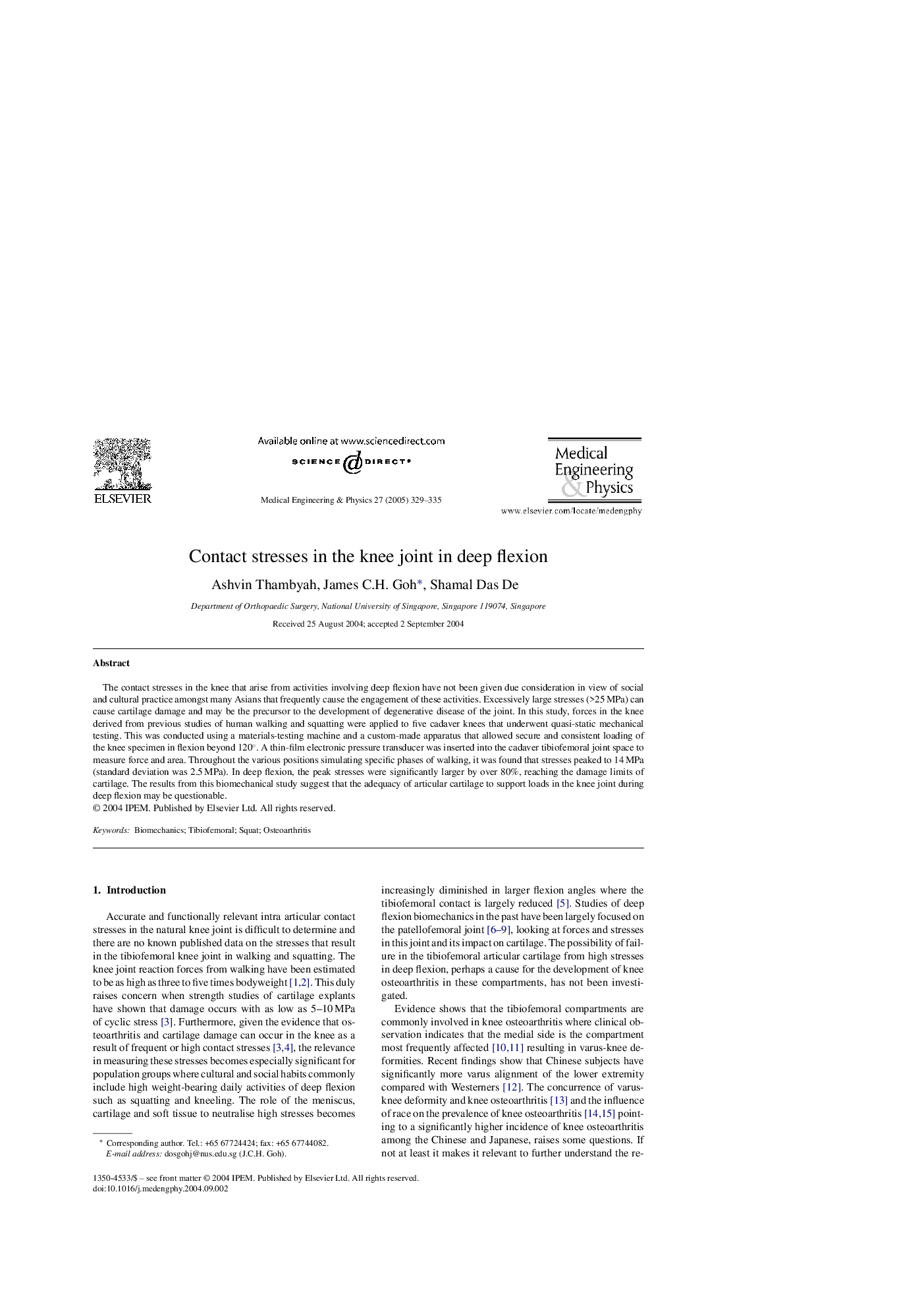| Article ID | Journal | Published Year | Pages | File Type |
|---|---|---|---|---|
| 10435512 | Medical Engineering & Physics | 2005 | 7 Pages |
Abstract
The contact stresses in the knee that arise from activities involving deep flexion have not been given due consideration in view of social and cultural practice amongst many Asians that frequently cause the engagement of these activities. Excessively large stresses (>25 MPa) can cause cartilage damage and may be the precursor to the development of degenerative disease of the joint. In this study, forces in the knee derived from previous studies of human walking and squatting were applied to five cadaver knees that underwent quasi-static mechanical testing. This was conducted using a materials-testing machine and a custom-made apparatus that allowed secure and consistent loading of the knee specimen in flexion beyond 120°. A thin-film electronic pressure transducer was inserted into the cadaver tibiofemoral joint space to measure force and area. Throughout the various positions simulating specific phases of walking, it was found that stresses peaked to 14 MPa (standard deviation was 2.5 MPa). In deep flexion, the peak stresses were significantly larger by over 80%, reaching the damage limits of cartilage. The results from this biomechanical study suggest that the adequacy of articular cartilage to support loads in the knee joint during deep flexion may be questionable.
Related Topics
Physical Sciences and Engineering
Engineering
Biomedical Engineering
Authors
Ashvin Thambyah, James C.H. Goh, Shamal Das De,
